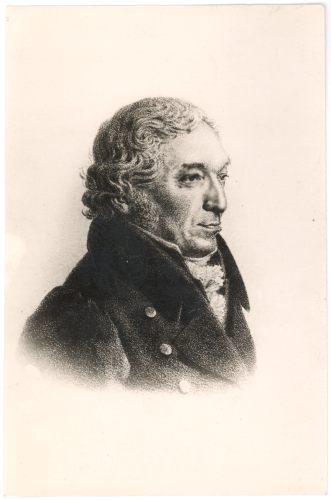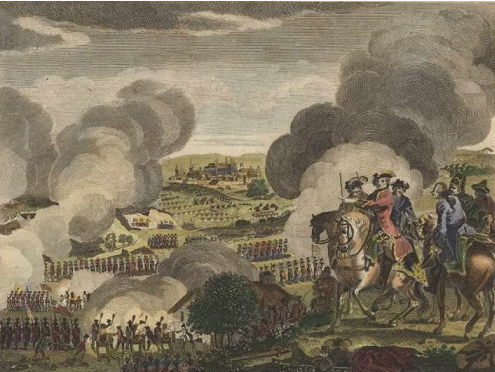|
Carl Friedrich Meyer
Carl Friedrich Meyer (16 February 1757 – 27 November 1817) was a German legal scholar. 1805–1808 he was the rector of Tartu University. He was born in Göttingen. He graduated from Göttingen University. 1792–1802 he has several legal posts in Dorpat (Tartu Tartu is the second largest city in Estonia after the Northern European country's political and financial capital, Tallinn. Tartu has a population of 91,407 (as of 2021). It is southeast of Tallinn and 245 kilometres (152 miles) northeast of ...). Beginning in 1802 he worked at Tartu University. He died in Dorpat (Tartu). References 1757 births 1817 deaths Emigrants from the Holy Roman Empire Immigrants to the Russian Empire Jurists from the Russian Empire Academic staff of the University of Tartu Rectors of universities in the Russian Empire Rectors of the University of Tartu German legal scholars {{Estonia-academic-bio-stub ... [...More Info...] [...Related Items...] OR: [Wikipedia] [Google] [Baidu] |
Rector Of Tartu University
{{Short description, none List of rectors of the University of Tartu The University of Tartu (UT; et, Tartu Ülikool; la, Universitas Tartuensis) is a university in the city of Tartu in Estonia. It is the national university of Estonia. It is the only classical university in the country, and also its biggest .... Academia Gustaviana (1632–1665) * Jakob Skytte (illustris, 1632–1633) * Andreas Virginius (1633) * Heinrich Hein (1633–1634) * Johann Below (1634) * Michael Savonius (prorector, 1634–1635) * Georg Manzel (prorector, 1635–1636) * Georg Manzel (1636) * Lorenz Luden (1636–1637) * Peter Schomer (1637–1638) * Salomon Matthiae (1638) * Andreas Virginius (1638–1639) * Heinrich Hein (1639–1640) * Johann Below (1641–1641) * Andreas Virginius (1641–1642) * Lorenz Luden (1642–1643) * Johannes Stiernstråle, Johannes Ericsson (1643–1644) * Salomon Matthiae (1644–1645) * Andreas Virginius (1645–1646) * Heinrich Hein (1648–1649) * Sal ... [...More Info...] [...Related Items...] OR: [Wikipedia] [Google] [Baidu] |
Göttingen
Göttingen (, , ; nds, Chöttingen) is a college town, university city in Lower Saxony, central Germany, the Capital (political), capital of Göttingen (district), the eponymous district. The River Leine runs through it. At the end of 2019, the population was 118,911. General information The origins of Göttingen lay in a village called ''Gutingi, ''first mentioned in a document in 953 AD. The city was founded northwest of this village, between 1150 and 1200 AD, and adopted its name. In Middle Ages, medieval times the city was a member of the Hanseatic League and hence a wealthy town. Today, Göttingen is famous for its old university (''Georgia Augusta'', or University of Göttingen, "Georg-August-Universität"), which was founded in 1734 (first classes in 1737) and became the most visited university of Europe. In 1837, seven professors protested against the absolute sovereignty of the House of Hanover, kings of Kingdom of Hanover, Hanover; they lost their positions, but be ... [...More Info...] [...Related Items...] OR: [Wikipedia] [Google] [Baidu] |
Göttingen University
Göttingen (, , ; nds, Chöttingen) is a university city in Lower Saxony, central Germany, the capital of the eponymous district. The River Leine runs through it. At the end of 2019, the population was 118,911. General information The origins of Göttingen lay in a village called ''Gutingi, ''first mentioned in a document in 953 AD. The city was founded northwest of this village, between 1150 and 1200 AD, and adopted its name. In medieval times the city was a member of the Hanseatic League and hence a wealthy town. Today, Göttingen is famous for its old university (''Georgia Augusta'', or "Georg-August-Universität"), which was founded in 1734 (first classes in 1737) and became the most visited university of Europe. In 1837, seven professors protested against the absolute sovereignty of the kings of Hanover; they lost their positions, but became known as the "Göttingen Seven". Its alumni include some well-known historical figures: the Brothers Grimm, Heinrich Ewald, Wi ... [...More Info...] [...Related Items...] OR: [Wikipedia] [Google] [Baidu] |
Tartu
Tartu is the second largest city in Estonia after the Northern European country's political and financial capital, Tallinn. Tartu has a population of 91,407 (as of 2021). It is southeast of Tallinn and 245 kilometres (152 miles) northeast of Riga, Latvia. Tartu lies on the Emajõgi river, which connects the two largest lakes in Estonia, Lake Võrtsjärv and Lake Peipus. From the 13th century until the end of the 19th century, Tartu was known in most of the world by variants of its historical name Dorpat. Tartu, the largest urban centre of southern Estonia, is often considered the "intellectual capital city" of the country, especially as it is home to the nation's oldest and most renowned university, the University of Tartu (founded in 1632). Tartu also houses the Supreme Court of Estonia, the Ministry of Education and Research, the Estonian National Museum, and the oldest Estonian-language theatre, Vanemuine. It is also the birthplace of the Estonian Song Festivals. Tar ... [...More Info...] [...Related Items...] OR: [Wikipedia] [Google] [Baidu] |
Tartu University
The University of Tartu (UT; et, Tartu Ülikool; la, Universitas Tartuensis) is a university in the city of Tartu in Estonia. It is the national university of Estonia. It is the only classical university in the country, and also its biggest and most prestigious university. It was founded under the name of ''Academia Gustaviana'' in 1632 by Baron Johan Skytte, the Governor-General (1629–1634) of Swedish Livonia, Ingria, and Karelia, with the required ratification provided by his long-time friend and former student – from age 7 –, King Gustavus Adolphus, shortly before the king's death on 6 November in the Battle of Lützen (1632), during the Thirty Years' War (1618–1648). Nearly 14,000 students are at the university, of whom over 1,300 are foreign students. The language of instruction in most curricula is Estonian, some more notable exceptions are taught in English, such as semiotics, applied measurement science, computer science, information technology law, and E ... [...More Info...] [...Related Items...] OR: [Wikipedia] [Google] [Baidu] |
Georg Friedrich Parrot
Georg Friedrich Parrot (15 July 1767 – 8 July 1852) was a German scientist, the first rector of the Imperial University of Dorpat (today Tartu, Estonia) in what was then the Governorate of Livonia of the Russian Empire. Education Georges-Frédéric Parrot was born in Mömpelgard (now Montbéliard) (then part of the Duchy of Württemberg, from 1806 in France). His father, a surgeon by profession and the local duke's physician in ordinary, had a respectable position in the society becoming the mayor of his hometown. As the family was Protestants, they sent Georg Friedrich to study physics and mathematics at the University of Stuttgart in Stuttgart, the capital of the Duchy (1782–1786). Career beginnings For several years after graduation, Parrot took positions as a private tutor in France and Germany, and in 1795 in Livonia, one of the Baltic provinces of the Russian Empire. His reasons for leaving Germany were mainly economic: as he was recently married, he needed a ... [...More Info...] [...Related Items...] OR: [Wikipedia] [Google] [Baidu] |
Christian Friedrich Von Deutsch
Christian Friedrich von Deutsch (28 September 1768 – 17 April 1843) was a German medical researcher. 1808–1809 (or until 1810) he was the rector of Tartu University. He studied at several universities in Germany. 1796-1804 he taught at Erlangen University. Since 1804 he taught at Tartu University. Since 1835 he lived in Dresden. References 1768 births 1843 deaths Rectors of universities in the Russian Empire Academic staff of the University of Tartu Rectors of the University of Tartu German medical researchers {{Estonia-academic-bio-stub ... [...More Info...] [...Related Items...] OR: [Wikipedia] [Google] [Baidu] |
1757 Births
Events January–March * January 2 – Seven Years' War: The British Army, under the command of Robert Clive, captures Calcutta, India. * January 5 – Robert-François Damiens makes an unsuccessful assassination attempt on Louis XV of France, who is slightly wounded by the knife attack. On March 28 Damiens is publicly executed by burning and dismemberment, the last person in France to suffer this punishment. * January 12 – Koca Ragıp Pasha becomes the new Grand Vizier of the Ottoman Empire, and administers the office for seven years until his death in 1763. * February 1 – King Louis XV of France dismisses his two most influential advisers. His Secretary of State for War, the Comte d'Argenson and the Secretary of the Navy, Jean-Baptiste de Machault d'Arnouville, are both removed from office at the urging of the King's mistress, Madame de Pompadour. * February 2 – At Versailles in France, representatives of the Russian Empire an ... [...More Info...] [...Related Items...] OR: [Wikipedia] [Google] [Baidu] |
1817 Deaths
Events January–March * January 1 – Sailing through the Sandwich Islands, Otto von Kotzebue discovers New Year Island. * January 19 – An army of 5,423 soldiers, led by General José de San Martín, starts crossing the Andes from Argentina, to liberate Chile and then Peru. * January 20 – Ram Mohan Roy and David Hare found Hindu College, Calcutta, offering instructions in Western languages and subjects. * February 12 – Battle of Chacabuco: The Argentine–Chilean patriotic army defeats the Spanish. * March 3 ** President James Madison vetoes John C. Calhoun's Bonus Bill. ** The U.S. Congress passes a law to split the Mississippi Territory, after Mississippi drafts a constitution, creating the Alabama Territory, effective in August. * March 4 – James Monroe is sworn in as the fifth President of the United States. * March 21 – The flag of the Pernambucan Revolt is publicly blessed by the dean of Recife Cathedral, Brazil. ... [...More Info...] [...Related Items...] OR: [Wikipedia] [Google] [Baidu] |
Emigrants From The Holy Roman Empire
Emigration is the act of leaving a resident country or place of residence with the intent to settle elsewhere (to permanently leave a country). Conversely, immigration describes the movement of people into one country from another (to permanently move to a country). A migrant ''emigrates'' from their old country, and ''immigrates'' to their new country. Thus, both emigration and immigration describe migration, but from different countries' perspectives. Demographers examine push and pull factors for people to be pushed out of one place and attracted to another. There can be a desire to escape negative circumstances such as shortages of land or jobs, or unfair treatment. People can be pulled to the opportunities available elsewhere. Fleeing from oppressive conditions, being a refugee and seeking asylum to get refugee status in a foreign country, may lead to permanent emigration. Forced displacement refers to groups that are forced to abandon their native country, such as by en ... [...More Info...] [...Related Items...] OR: [Wikipedia] [Google] [Baidu] |






